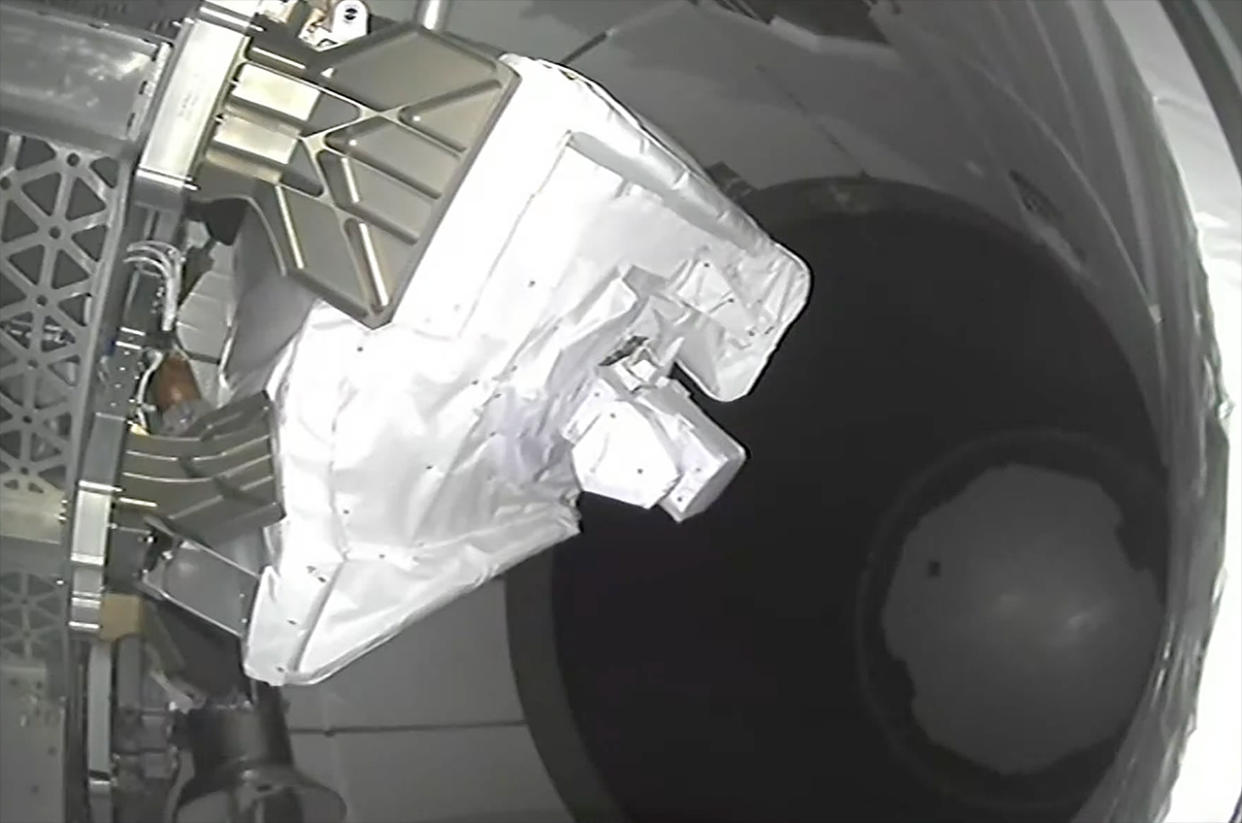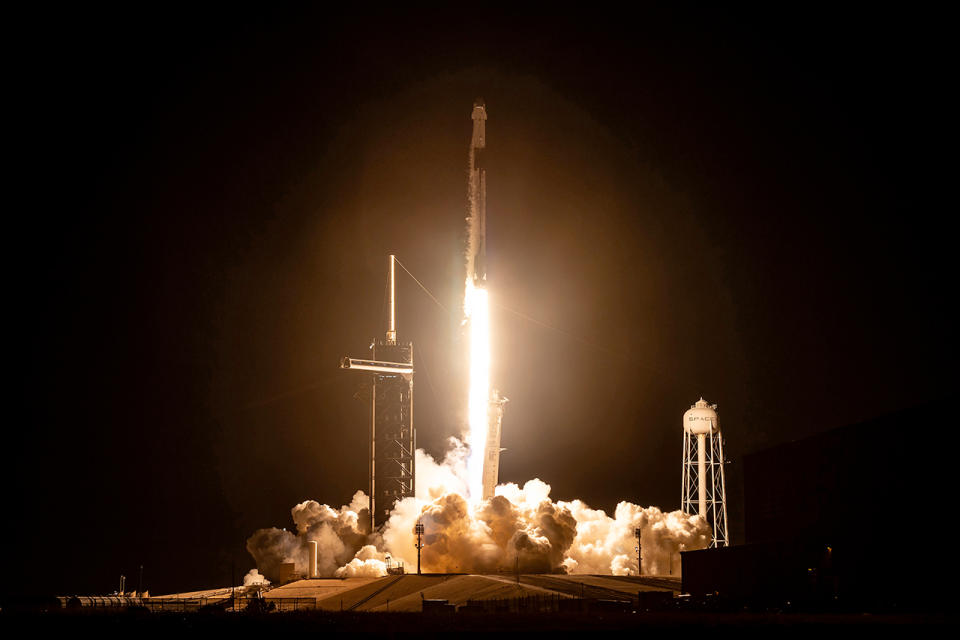SpaceX launches its 29th cargo mission to the International Space Station

SpaceX's 29th robotic cargo mission to the International Space Station successfully lifted off on Thursday (Nov. 9).
The CRS-29 Dragon launched atop a Falcon 9 rocket from NASA’s Kennedy Space Center (KSC) in Florida at 8:28 p.m. EST (0128 GMT on Nov. 10).
The Falcon's first stage made a successful landing at Cape Canaveral Space Force Station's Landing Zone 1 (LZ-1). The launch marked the second flight for the stage, which previously launched Crew-7.
Related: SpaceX to launch final piece of NASA's 1st two-way laser communications relay

If all goes according to plan, the Dragon will arrive at the ISS around 5:20 a.m. EST (1020 GMT) on Saturday (Nov. 11). You can watch the rendezvous and docking here at Space.com.
As its name suggests, CRS-29 is the 29th robotic resupply mission that SpaceX is flying to the orbiting lab for NASA. (CRS stands for "Commercial Resupply Services.") Dragon is carrying more than 6,500 pounds (2,950 kilograms) of supplies and scientific hardware on this run, including NASA's AWE and ILLUMA-T experiments.
AWE (short for "Atmospheric Waves Experiment") will study gravity waves, disturbances in Earth's atmosphere akin to the waves created when a pebble plunks into a pond. (Gravity waves are very different than gravitational waves, which are ripples in the fabric of space-time caused by the acceleration of massive objects such as black holes and neutron stars.)
ILLUMA-T ("Integrated Laser Communications Relay Demonstration Low Earth Orbit User Modem and Amplifier Terminal") will test high-speed communications in collaboration with NASA's Laser Communications Relay Demonstration (LCRD) mission, which launched in December 2021.
After ILLUMA-T is installed on the exterior of the ISS and checked out, it will begin tracking and communicating with LCRD, a ride-along instrument on a U.S. Department of Defense satellite that resides in geosynchronous orbit, more than 22,000 miles (35,400 kilometers) above Earth. The ISS, by contrast, circles at an average altitude of about 250 miles (400 km).

Together, ILLUMA-T and LCRD will "create NASA's first two-way laser communications relay system," agency officials wrote in an overview of CRS-29's science gear.
"Laser communications can supplement the radio frequency systems that most space-based missions currently use to send data to and from Earth," they added. "The ILLUMA-T demonstration also paves the way for placing laser communications terminals on spacecraft orbiting the moon or Mars."
The Dragon is also carrying a variety of food on CRS-29, including some seasonal specialties.
"We've got some fun holiday treats for the crew, like chocolate, pumpkin spice cappuccino, rice cakes, turkey, duck, quail, seafood, cranberry sauce and mochi," Dana Weigel, deputy program manager for NASA's International Space Station Program, said during a media call on Wednesday.
RELATED STORIES:
— Groundbreaking laser communications experiment flying to ISS on SpaceX cargo mission
— SpaceX Crew-7 astronauts will handle over 200 science experiments on ISS
— FAA wraps up safety review of SpaceX's huge Starship rocket
Dragon will spend about a month docked to the ISS on CRS-29, then come back to Earth with about 3,800 pounds (1,724 kg) of cargo, according to NASA officials.
Dragon is the only cargo vehicle with this return capability. The other two robotic freighters that are operational today — Northop Grumman's Cygnus craft and Russia's Progress vehicle — are designed to burn up in Earth's atmosphere when their orbital missions are over.
Thursday's launch was originally scheduled to occur on Nov. 5, but NASA and SpaceX pushed it back two days to provide more time for prelaunch processing. The liftoff was then delayed two additional days, so teams could work an issue with one of the Dragon's Draco thrusters.

